Our Blog - Aeroscopia
For the 50th anniversary of the first flight of the Concorde, we decided to visit Aeroscopia. There were various events there (although none that we actually took advantage of) that we had seen in the paper. There were anniversary events across Britain as well, since it was a French-English joint venture. The first Concorde prototype took off from Toulouse in the south of France on March 2, 1969, and flew for 27 minutes with test pilot Andre Turcat at the helm. It was quite a technological feat, although the 8K price tag made it more of the way to travel for the discerning tycoon and Hollywood star. Its fine wines and five-star cuisine assured it a large, well-heeled fan base, with regular passengers including the likes of Joan Collins, Sir Paul McCartney and Diana, Princess of Wales. Initially, there were hundreds of planes ordered by a variety of airline companies, but then the oil crisis hit and British Airways and Air France were the only 2 that used the Concorde in commercial flights. It was the safest plane in the world until the crash in 2000 that killed everyone on board. It was retired from service in October 2003, with British Airways and Air France blaming a downturn in passenger numbers and rising maintenance costs. More on the Concorde later ....
Back to Aeroscopia. It is actually a very new museum, having been opened only in 2015. It is located next to one of the the Airbus sites, which makes it perfect as it you can take a tour of Airbus at the same time. Also there is the Association of Ancient Wings (Ailes Anciennes Toulouse) that has other planes that have been restored on display. It was quite logical to have an aviation museum here, not just because Airbus is here, but because nearly 80,000 people in the region make their living from the aviation industry, and because the first powered aircraft was designed nearby (by Clément Ader).
The first thing you see as you walk up are 3 planes sitting outside. The Caravelle (created by Sud Aviation), holds the distinction of being the world's first jet-powered airliner to be developed for the short/medium-range market. Its maiden flight was in May 1955 although the first revenue-producing flight was in April 1959. It became one of the most successful European first-generation jetliners. There were 9 variations, although the numbering scheme is a bit odd, going from 1 to 12. This one is a Caravelle 12, and it is the last Caravelle ever built (#280) and was originally delivered to Air Inter (a small French domestic carrier that was later merged with Air France). There were several innovations that were key to the expanding market, including the rear entry door with built-in stairs that made mobile stairs unnecessary and made it easier to use at smaller airports. The guide also spoke about the rounded, triangle-shaped windows. The rounded corners reduced the stress points and the triangle shape made them smaller than conventional windows but gave the same field of view downwards.

Next is the A400M Atlas, which is a turboprop military transport plane, designed to replace the C-130 Hercules by carrying more payload and being able to use rough landing strips. It can also do aerial refueling and medical evacuation when fitted with the right equipment. It is a fairly new plane, with the first flight taking place in 2009 and the first aircraft being delivered in 2013. This plane, with a manufacturer serial number (MSN) of 1, is the first A400M that was built. A bit of trivia, the plane appeared in the 2015 film Mission Impossible: Rogue Nation. In the opening scene, Ethan Hunt, played by Tom Cruise, hangs onto the side of an Airbus A400M Atlas as it takes off.
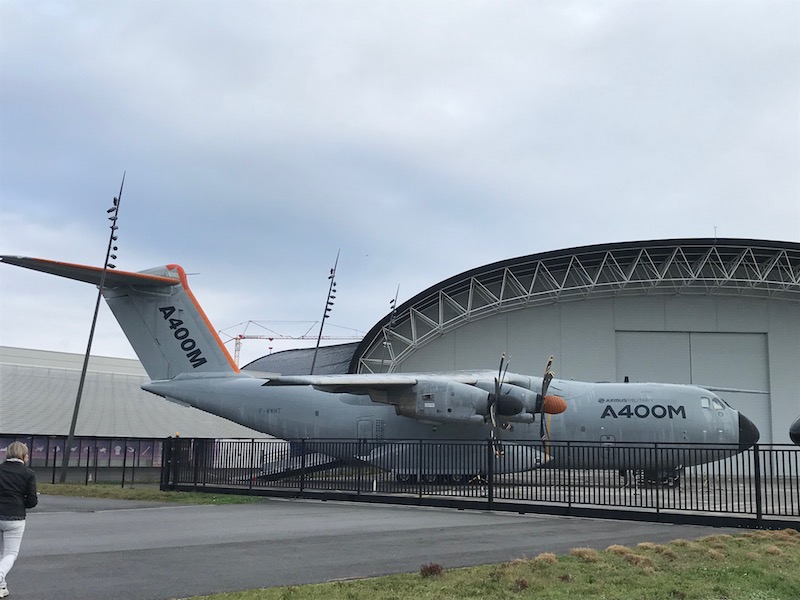
And then the Concorde, this one being from the Air France fleet and the 9th that was built (MSN 9). It flew from 1976 until 2003, when its last flight was from Paris to Toulouse. This specific plane completed a round-the-world flight in 1989 of 51,354 kilometers in 37 hours 25 minutes, including 17 hours and 5 minutes at supersonic speed. A second circumnavigation in 1993 covered 43,084 kilometers in 35 hours 20 minutes, also with 17 hours and 5 minutes at supersonic speed.

Inside, there are lots of planes and lots of information available. On one side, there is a wall that goes through the timeline of flight, starting with Clément Ader to present day. I have now mentioned Clément Ader twice ... he was born and died in Toulouse and was one of the early pioneers in flight in addition to an inventor who, among other things, invented the théâtrophone. This was used to give the first stereo transmission of an opera performance in 1881. In 1886, he constructed his first flying machine, called the Éole, using studies on the flight of birds. It had bat-like wings that spanned 46 feet and was powered by a lightweight steam engine driving the propeller. He is given credit for the first "powered take-off" and "uncontrolled flight" in 1890 when he flew the Éole 8 inches off the ground for 160 feet. However, since he didn't have any proof (photo) of this flight, and nobody was there to do an official measurement, he is not the "first in flight" (Orville and Wilber Wright).
This is a replica of the Bleriot XI, which made the first flight across the English Channel in a heavier-than-air aircraft, in 1909. In 1908, the Daily Mail had announced a competition with a prize of £500 for the first flight over the English Channel. No serious attempts were made (interesting ... I guess there were some non-serious attempts?) and it was doubled to £1000. Several people then planned and attempted the crossing. Wilber Wright was semi-interested and contacted his brother Orville. But when Orville became interested, Wilber lost interest stating that the reward money wasn't enough considering the dangers involved. Louis Bleriot made history when he made the crossing in July 1909. Since he didn't have a compass onboard, he initially followed a boat (that was carrying his wife across the channel) although he ended up getting ahead of the boat and then hit a fog bank. He finally saw the English coastline and realized he was a bit off course, so then changed course and followed the coastline until he saw a correspondent from a French newspaper, Le Matin, waving a large French flag as a signal. The flight had taken 36 1/2 minutes. You an see how the frame of the plane is just that ... a frame .. held together by piano wires. I can't imagine sitting up in that little seat with nothing but water under me.

Another French plane, this one the Pou du Ciel (literally, Louse of the Sky), nicknamed the "Flying Flea". The name comes from the Ford Model T, which was nicknamed "Pou de la Route" (Louse of the Road) because it was so common and initially only came in black. The biplane was designed by Frenchman Henri Mignet between 1920 and 1928, and successfully flew for the first time in 1933. The plans and building instructions were published in 1935 and hundreds of people around the world built their own Flying Fleas. In 1936, it was estimated the cost of construction was approximately £75 and that some five hundred examples were under construction in Britain. Unfortunately, there were several design flaws that led to many crashes when pilots were unable to recover from shallow dives.
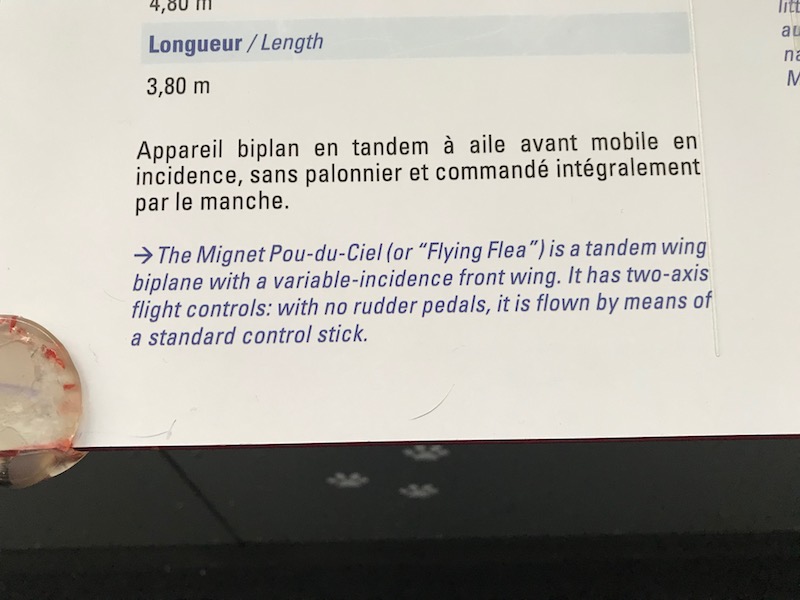
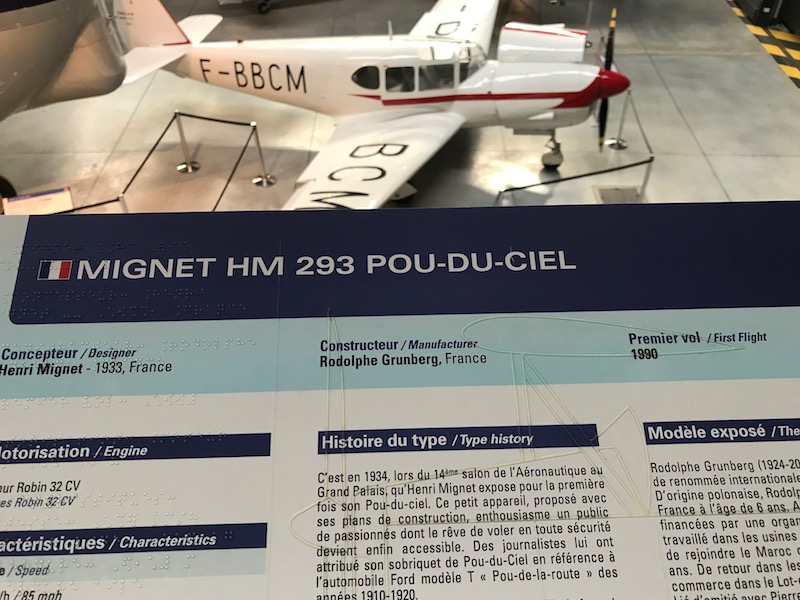
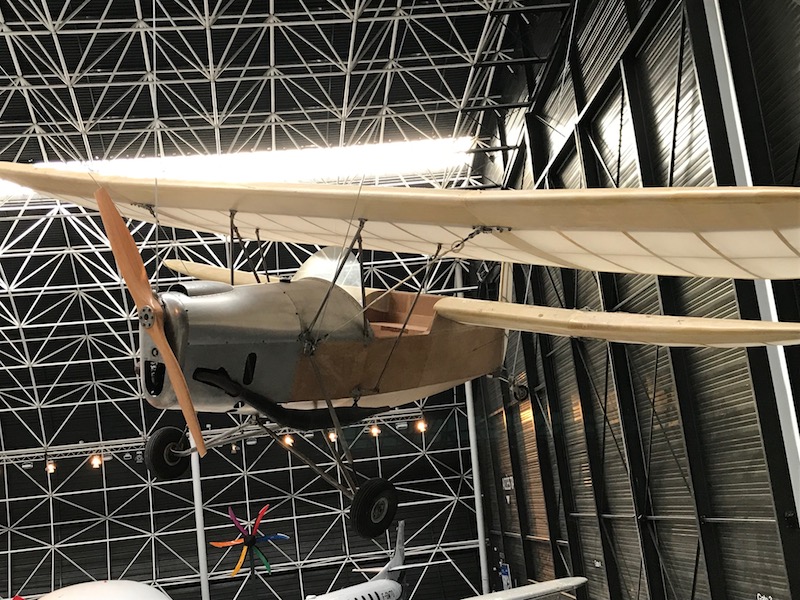
Probably the biggest plane at Aeroscopia is the Super Guppy. It was originally designed to carry the rocket parts for NASA. The Apollo rocket stages had to be transported from California to Florida, and in the beginning, the only way to do this was a slow boat through the Panama Canal. The Guppy fleet is made up of multiple aircraft including the Pregnant Guppy and Super Guppy. Since the first flight in 1965, the aircraft has since flown over three million kilometers in support of NASA's Gemini, Apollo and Skylab programs. Without the Guppy, NASA would have never been able to send astronauts to the moon by 1969. To open the Super Guppy, the nose section swings open 110 degrees. Only 5 Super Guppy's were built since there just wasn't a big market for this type of plane. NASA still uses a Super Guppy (supposedly the last one).

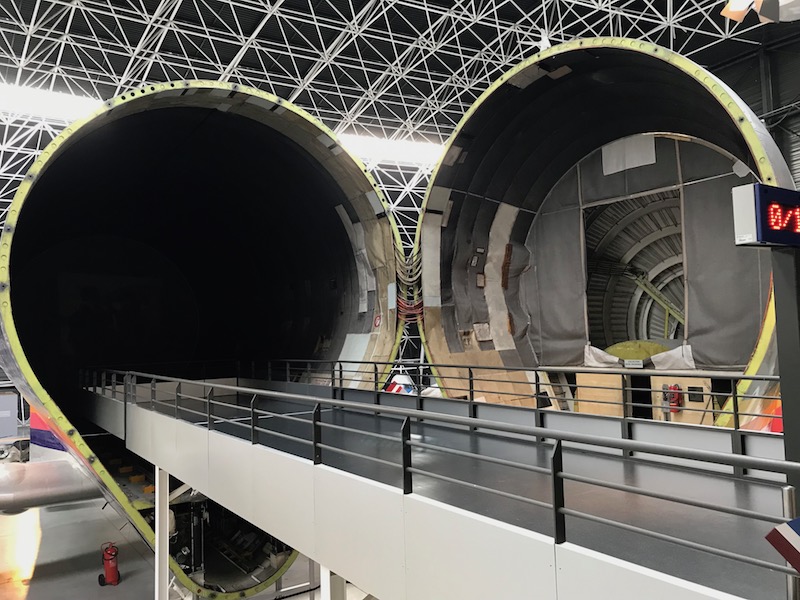
Airbus originally had bought several Super Guppy's to transport aircraft components between the various locations where they were manufactured and the Airbus manufacturing line in Toulouse where all of the pieces were assembled into the final airplane. However, to open the nose required disconnecting the flight controls, cables, pipes, electrical wiring, etc ... a very long and tricky operation. In 1990, a new program was launched to create the successor, which is known as the Beluga. A flat floor and large door above the cockpit, which is placed below the cargo bay, remove the connection and disconnection problems of the Guppy. In the model, you can see how they place the wings in the cargo bay. The newest model, the Beluga XL, should go into service this year. There are currently 5 Belugas, each flying daily, six days a week. We see these flying quite often when we are playing golf, and we saw one taking off when we were outside.

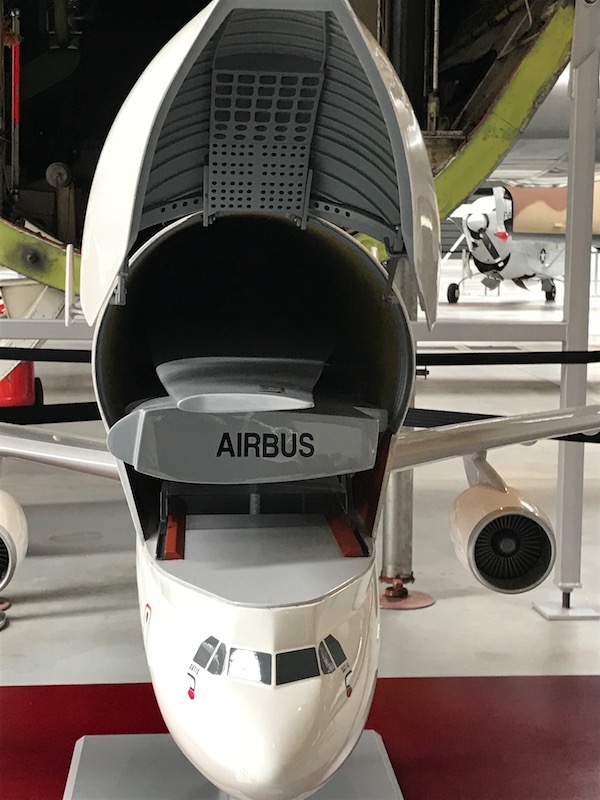
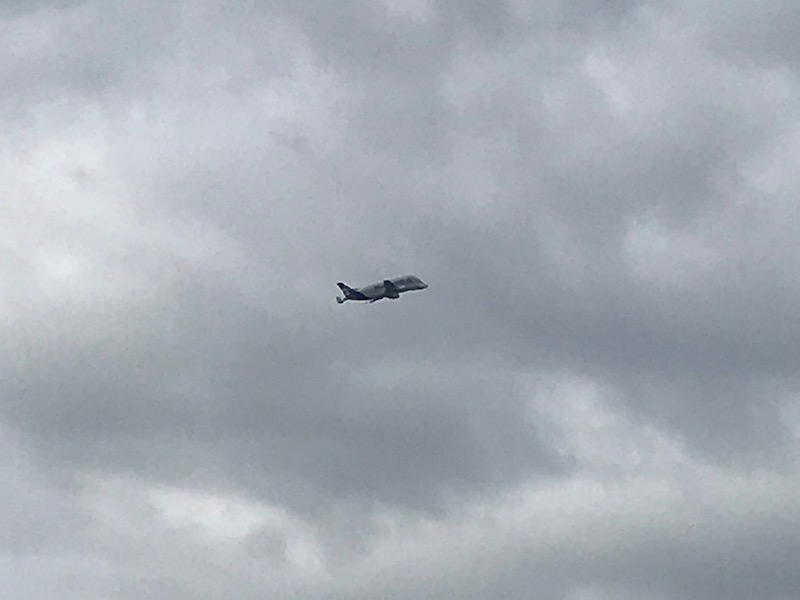
Another large plane inside is an Airbus A300. The name comes from the original proposal with a capacity of 300 seats. This specific plane is MSN 234, first delivered in 1984 to Pan Am. When it went bankrupt, it was sold to Sempati Air in Indonesia where it flew until 1998. You can walk through the interior, which shows a few different things. In the first section, the walls (1st picture) and floor (2nd picture) open to allow you to see the structure and systems of the aircraft. The flight controls of the A300B are all hydro-mechanical, meaning that the pilots’ inputs on the control column in front of him are sent via cables and pulleys (you can see these under the cabin floor) to the hydraulic circuits that move the control surfaces on the wings and tail.
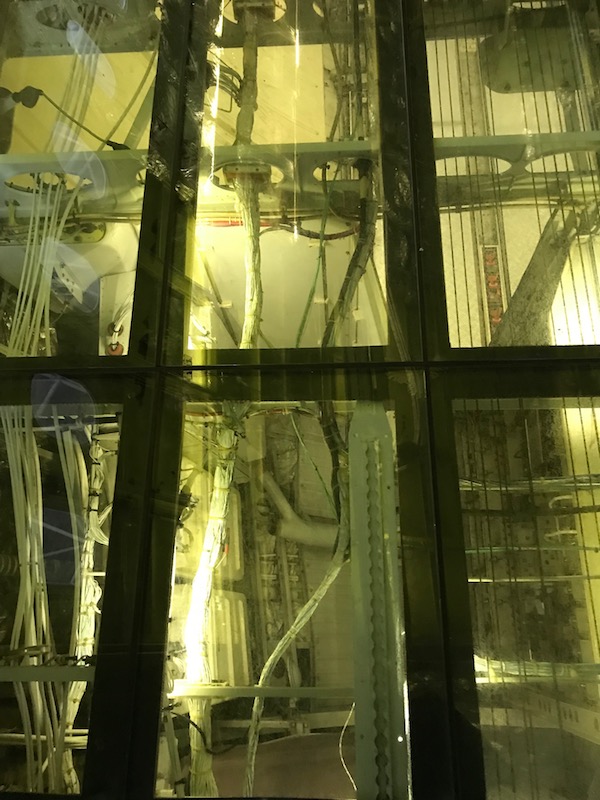

The back shows some first class and VIP facilities ... although I guess the bed, conference room, and shower are more for private jets.

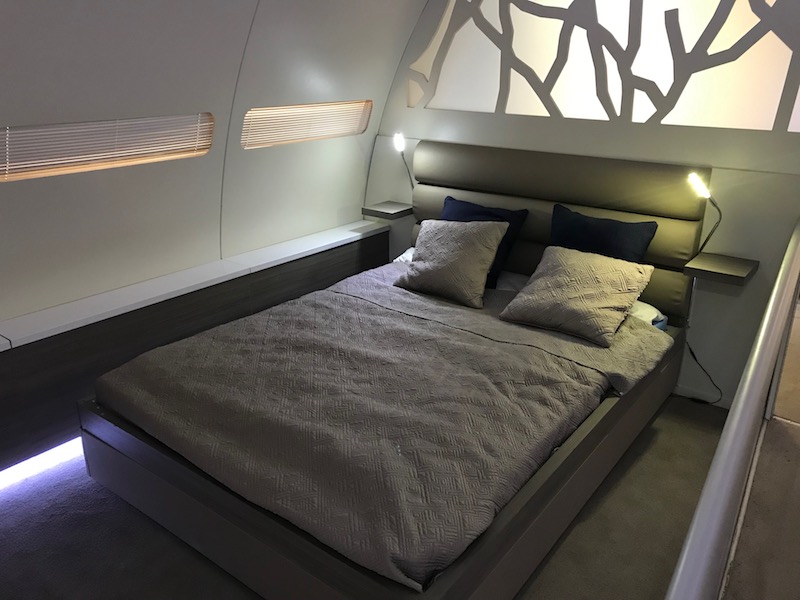

One thing that you can do (for a small extra cost) is the 8-minute Airbus A380 "flight simulator". Not really a simulator, but for 4 euros, you can pilot an A380 over Toulouse.
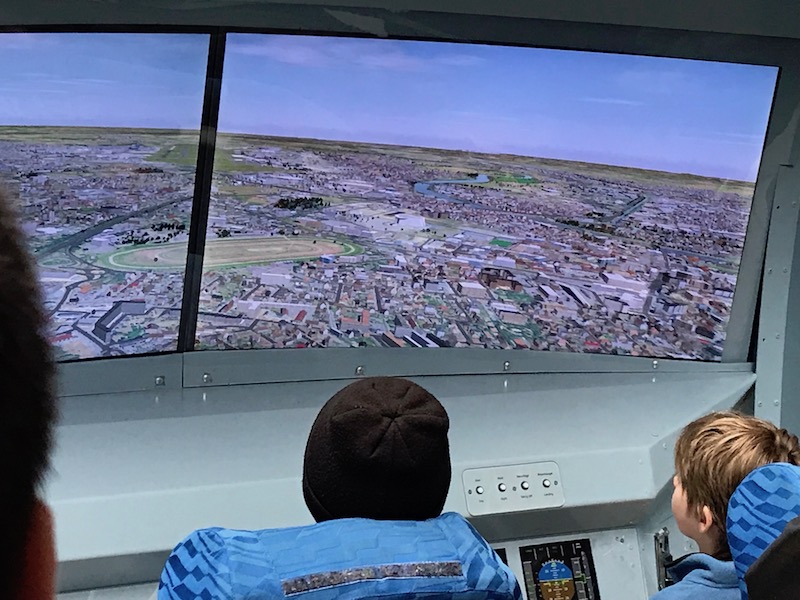
Now, back to the Concorde. As I mentioned, it is the 50th anniversary of the first flight, and so there is actually a lot of information on the Concorde (every news program, newspapers), as well as events in France and England). The first Concorde prototype took off from Toulouse in the south of France 50 years ago on March 2, 1969, with the first production aircraft taking off in 1973. Obviously, it was very interesting due to the speed (Mach 2.02) and shape (the ogivale delta wing and nose that droops). The guide also talked about the need to have very tall landing gear, which puts the fuselage so high up off the ground compared to other planes. This was due to the steep angle on take-off and landing and if it was lower, the engines would hit the ground.
The Concorde that is inside, that you can walk through, is a pre-production unit that was used for testing but was also used to carry several presidents of the French Republic.
We will start with the nose ... the distinctive droop-nose configuration was on both the Concorde and the Tupolev Tu-144 (the Russian supersonic plane). When these aircraft were in service, the pilot would lower the nose cone to improve visibility of the runway and taxiways. When in flight, the nose would be raised. To see the nose drooped, you can look at this Wikipedia photo
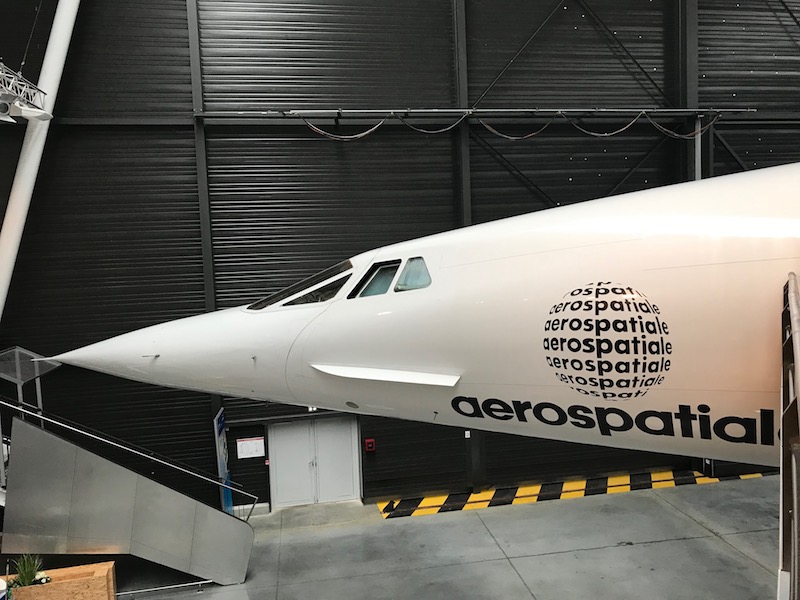
Next is the wing, which is called an ogivale delta wing. The delta wing forms the shape of a triangle, similar to the shape of the Greek uppercase letter "delta" (Δ). It is used for many fighter jets in addition to the supersonic planes. Specific to the Concorde, the ogivale delta wing has a cropped wingtip merged into a smooth ogee curve.
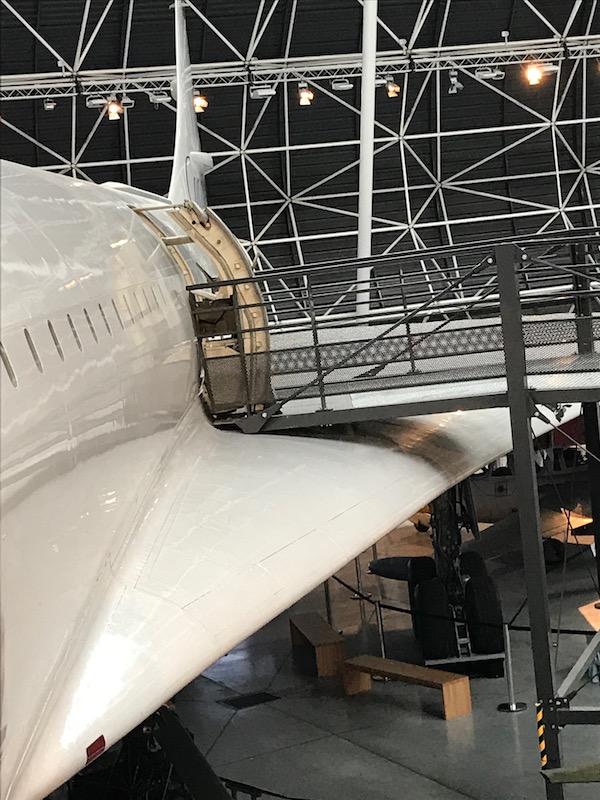
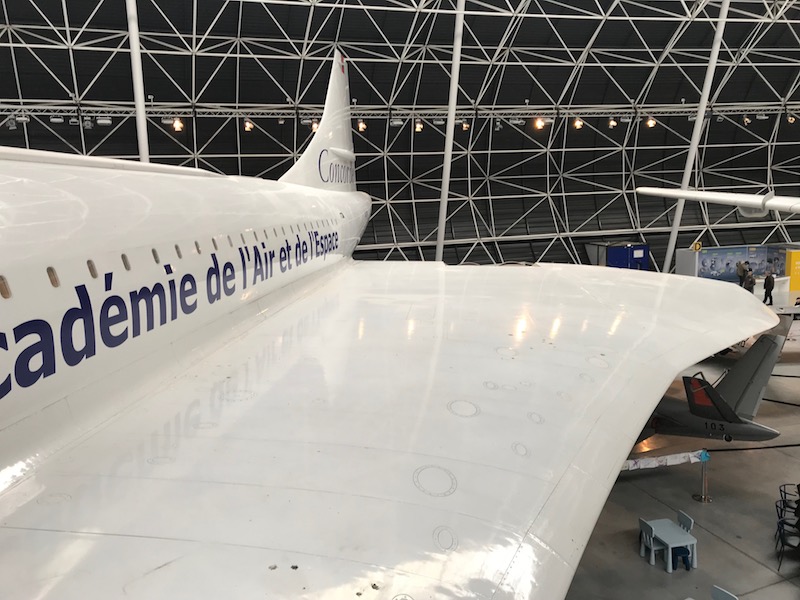
Since this was a testing plane, there is extra testing equipment in addition to the mass of gauges and switches in the cockpit. As you can imagine from the shape, the cockpit seems really small and I can't imagine it was very comfortable for 3 people to be in there ... the positive is that the flight was not that long! I'm always shocked when I look at a plane cockpit and how many things are there.
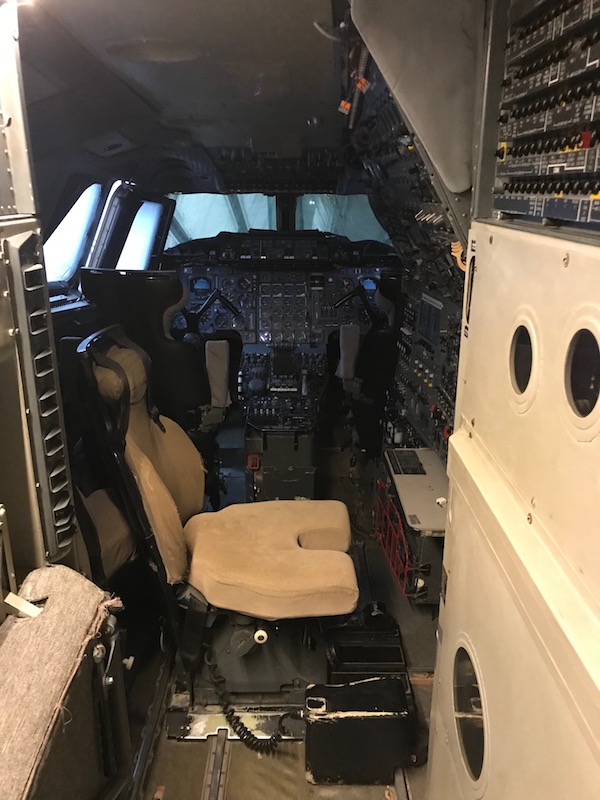
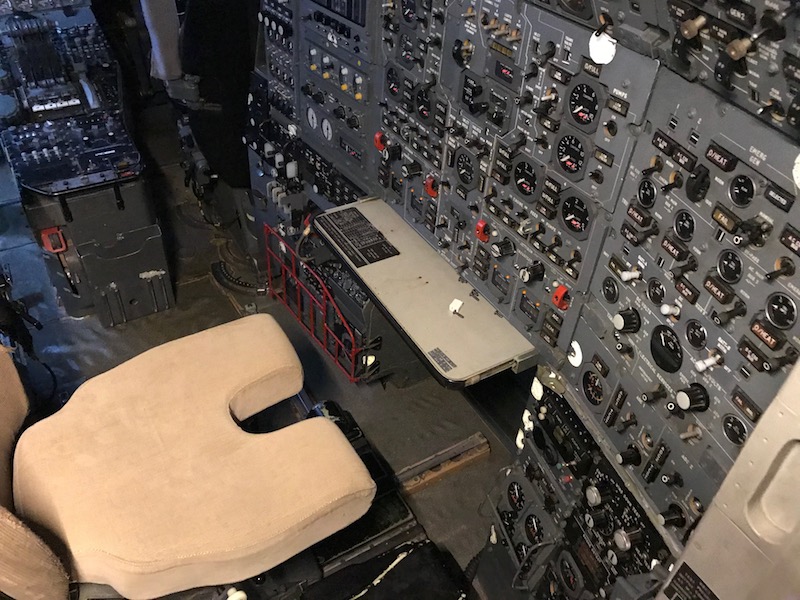
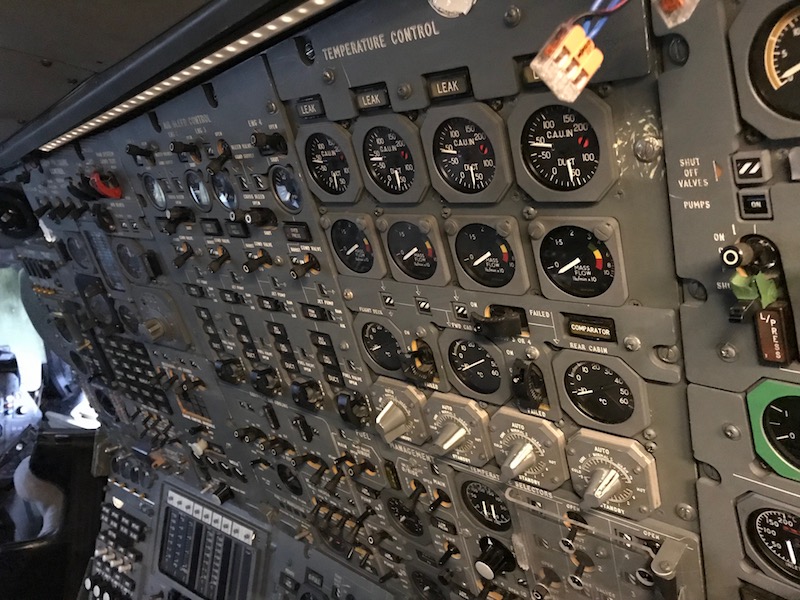
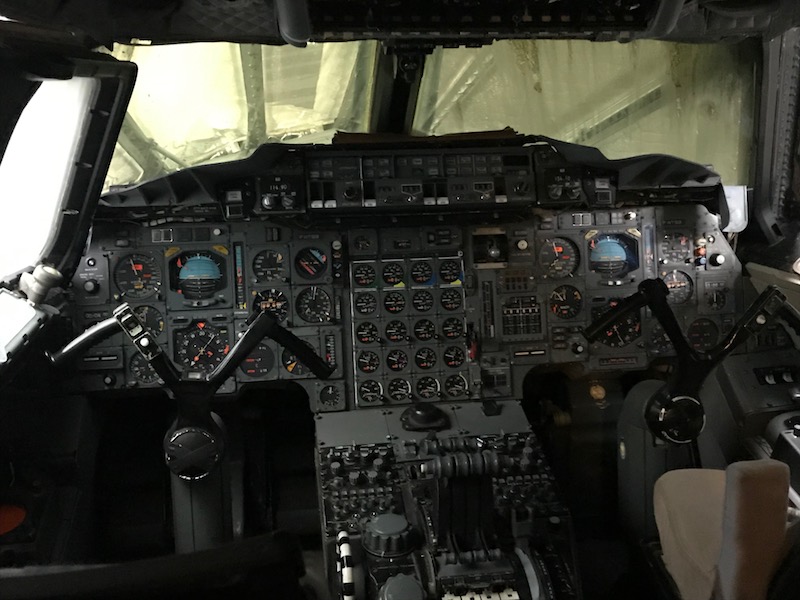

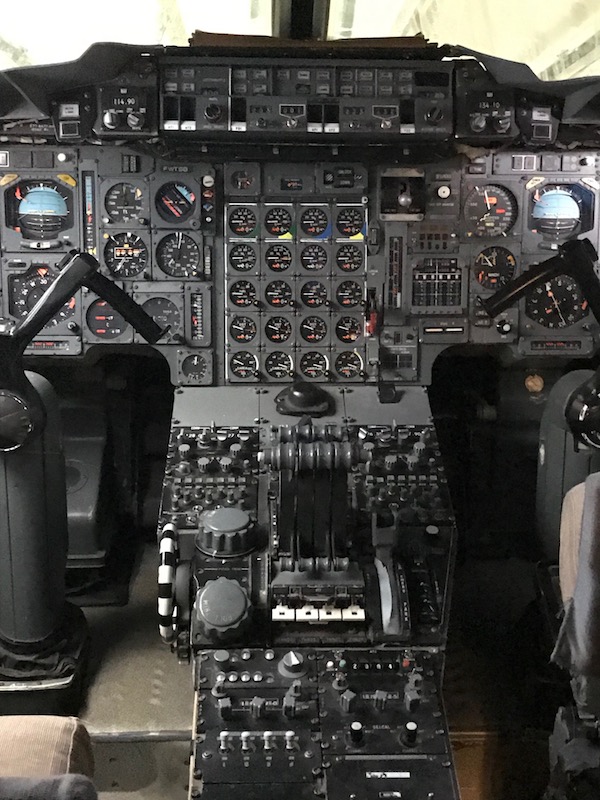
The testing equipment took up a good part of the middle of the cabin.


They also have some seats in a couple sections ... I don't remember if there was both coach and first class or not (I never got the opportunity to ride in a Concorde).
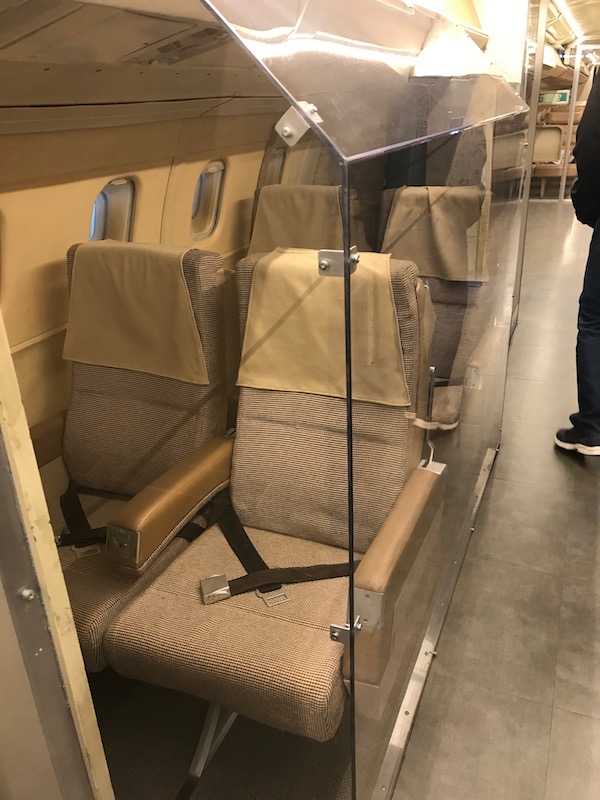
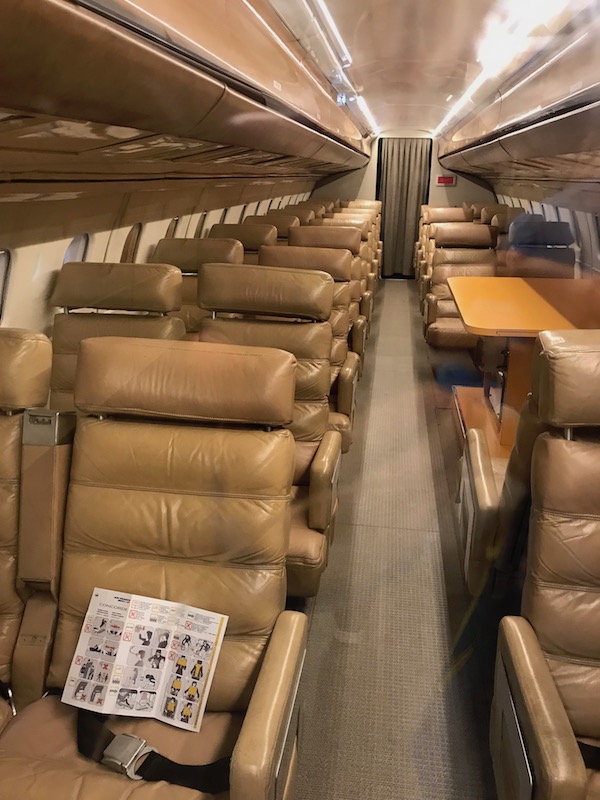
To power the plane to Mach 2.02 at up to 60,000 feet are four Olympus engines based on those employed in the RAF's Avro Vulcan strategic bomber. These are placed just behind the leading edge of the wing and each has its own air intake. For an extra boost at take-off and supersonic speeds (between Mach 0.95 and 1.7), afterburners were used but switched off at all other times.
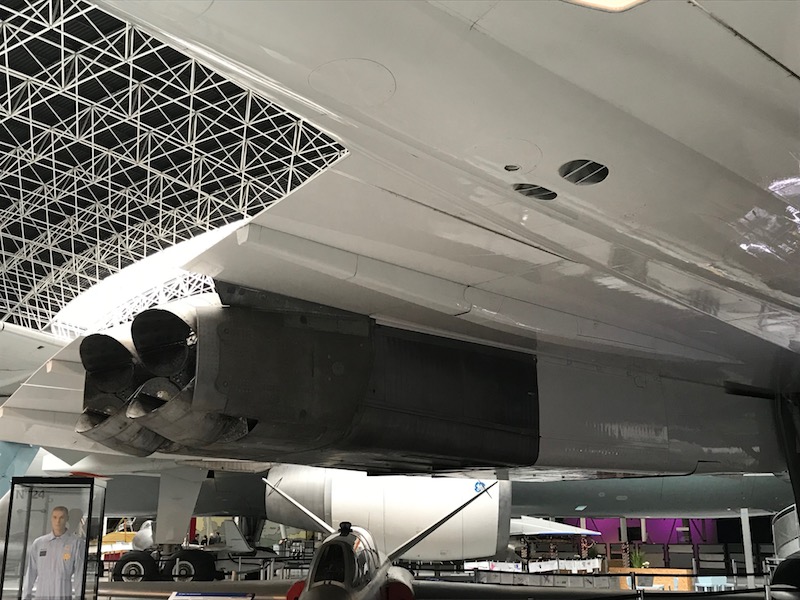
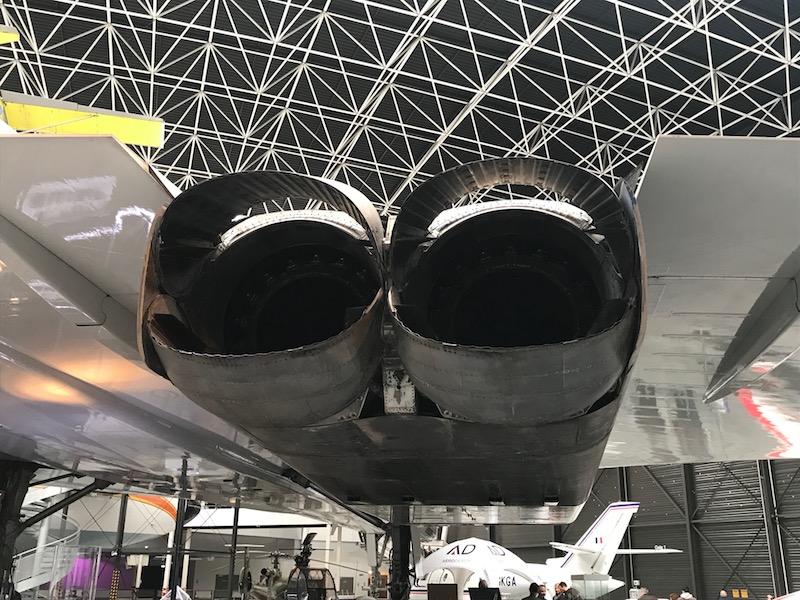
There are several things that attributed to the death of the Concorde. First, the engines were highly inefficient as low speeds and burned 2 TONS of fuel just to taxi to the runway. The Concord burned twice as much fuel "per passenger" as a Boeing 707 and with the 747 and DC10 being even more fuel efficient, the cost of flying the Concorde was not sustainable. Due to the sonic booms that were produced, they could not fly over populated areas. World events had also dampened Concorde sales prospects, the 1973-74 stock market crash and the 1973 oil crisis had made many airlines cautious about aircraft with high fuel consumption rates. When it was launched in the 60's, over 100 non-binding orders were placed. Starting in 1972, all but those from Air France and British Airways were cancelled. Many people thought the crash of Air France flight 4590 was the death-blow, but by the time of the crash in 2000, it was already (in my opinion) on its last legs. Most people remember this crash and the pictures of the flight during takeoff with the flames coming out of the back (this one from Wikipedia). The investigation concluded that the plane ran over a piece of metal left from a DC-10 that had just taken off, which caused a tire to explode, which caused a fuel tank to rupture and catch fire. In the 27 years that the Concorde operated, this was the only fatal accident. This was NOT, however, the only tire problem. In the 27 years that the Concorde operated, there were around 70 tire or wheel-related incidents, many of them where a tire blew out and damaged either the fuel tank or landing gear.
The Concorde simulator is the first flight simulator made using authentic parts and was used for training crews until the end of commercial flights in 2003. You an walk through it (okay, so this one wasn't all that interesting) and there is a group that seems to be looking at putting it back into service.
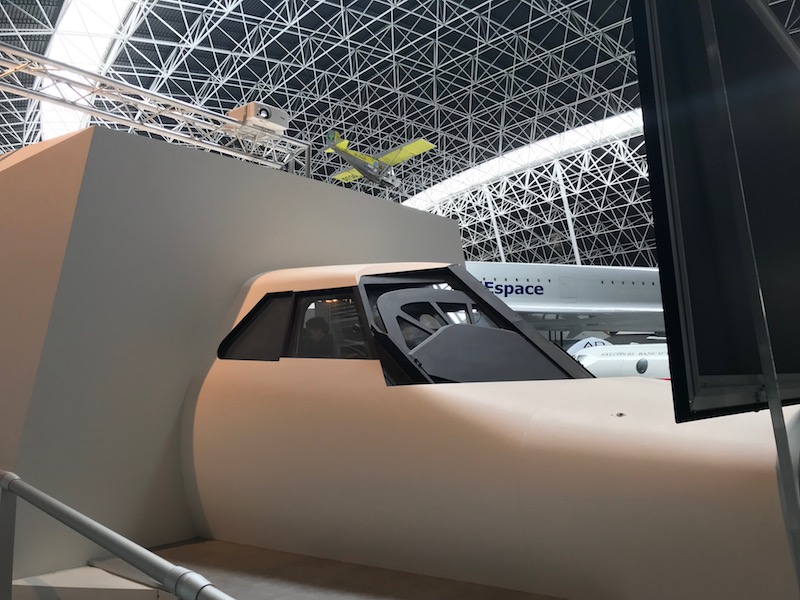

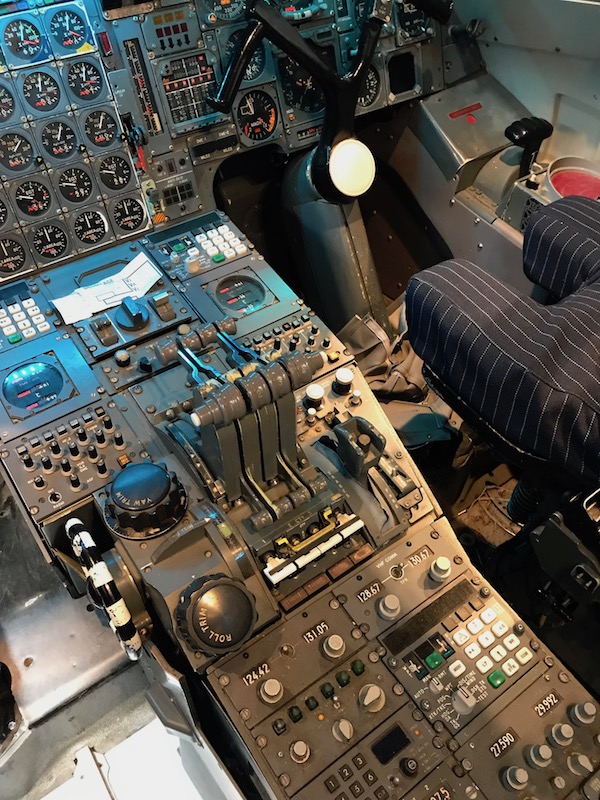
Anybody visiting Toulouse, I really do recommend you take a day and do Aeroscopia AND the Let's visit Airbus tour (which we didn't do because we are hoping to do a group tour with the AIT International club later).